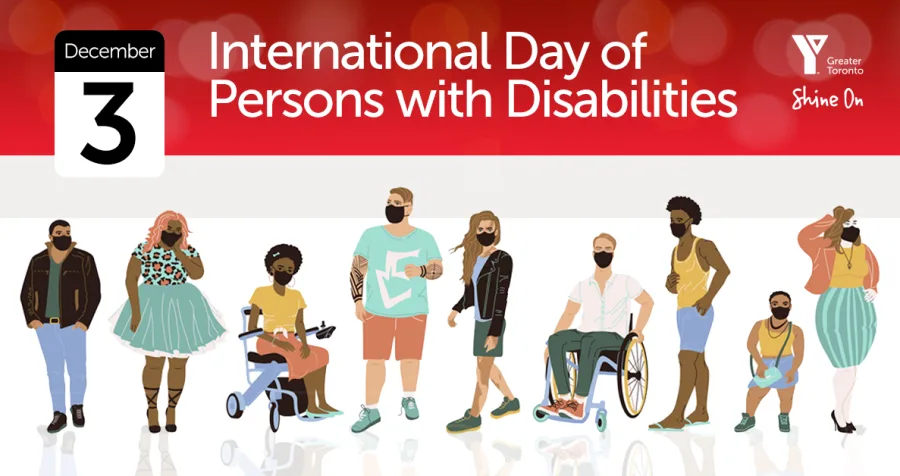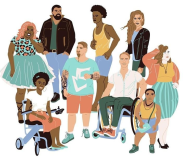
People with disabilities were particularly impacted by the COVID-19 pandemic, with its resulting isolation and diminished services. The year’s International Day of Persons with Disabilities (December 3, 2021) aims to spread awareness about this impact, and encourages everyone to consider disabilities throughout our worldwide pandemic recovery efforts. Whether you have a disability or not, if you want to be an ally in knocking down barriers to diversity, equity, inclusion, and belonging, read on!
Understanding disability
We often think about physical disabilities that are visible, like using a wheelchair; but many disabilities are non-visible. An individual’s mind, body, or senses can vary in ability, in ways that differ from those without disability.
Someone can be born with a disability, or become disabled at any time in their life. Disability is also a spectrum, with some folks needing more support than others in order to meet social and individual needs.
Individuals may identify as neurodiverse and be autistic, dyslexic, have attention deficit hyperactivity disorder (ADHD) or another type of neurodiversity, meaning individual differences in brain functioning that commonly occur within humans. Yet, not all of these conditions may be apparent to others in the course of regular, personal interactions. It’s important to consider all types of disability when working to advance diversity, equity, inclusion and belonging in our communities.

Image source: cancbc.org
Disbelief or ignoring disability (whether non-visible, or visible) is a barrier to inclusion. It increases difficulties for individuals with disabilities to find supportive environments where they can: be productive, accept opportunities for leadership, maintain their dignity, and their independence. We can address this using a universal design model, moving away from thinking that accommodations can adequately address all barriers to participation.
It’s also important to be aware of how individuals with disabilities face discrimination, compounded by other parts of their identities such as race, gender, sexuality, and age, to name a few. Listening to people with disabilities is the first step to dismantling inequities, systemic in our culture and society, which discriminate intentionally or unintentionally. This intersectional approach is rooted in the disability justice model, a framework that examines disability and ableism as it relates to other forms of oppression and identity.
Let’s make the difference together! Ask: How can we make our environments and services more accessible to all? And learn from the list of resources below.
10 ways to learn about disability
GLOSSARIES
2. Words Matter
VIDEOS
3. Social Justice – What’s Disability Got to do with it?
4. Person First or Identity First Language
BOOKS
5. Care Work: Dreaming Disability Justice – Leah Lakshmi Piepzna-Samarasinha
6. Disability Visibility – Alice Wong
7. Demystifying Disability, What to know, What to say, and How to be an Ally – Emily Ladau
WEBSITE
8. Disability Justice Network of Ontario
PODCASTS
Written by Robin Waley and Marcy Robertson.










